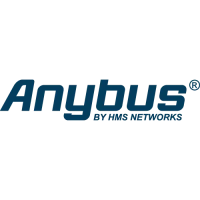109
Doc.Id. HMSI-27-212
Anybus CompactCom 40 EtherNet/IP
Doc.Rev. 1.5
9.6 Socket Interface Object (07h)
Category
Extended
Object Description
This object provides direct access to the TCP/IP stack socket interface, enabling custom protocols to
be sent over TCP/UDP.
Note that some of the commands used when accessing this object may require segmentation. For more
information, see “Message Segmentation” on page 189.
IMPORTANT: The use of functionality provided by this object should only be attempted by users who are already fa-
miliar with socket interface programming and who fully understands the concepts involved in TCP/IP programming.
Supported Commands
Object: Get_Attribute
Create (See “Command Details: Create” on page 111)
Delete (See “Command Details: Delete” on page 112)
Instance: Get_Attribute
Set_Attribute
Bind (See “Command Details: Bind” on page 113)
Shutdown (See “Command Details: Shutdown” on page 114)
Listen (See “Command Details: Listen” on page 115)
Accept (See “Command Details: Accept” on page 116)
Connect (See “Command Details: Connect” on page 117)
Receive (See “Command Details: Receive” on page 118)
Receive_From (See “Command Details: Receive_From” on page 119)
Send (See “Command Details: Send” on page 120)
Send_To (See “Command Details: Send_To” on page 121)
IP_Add_membership (See “Command Details: IP_Add_Membership” on page 122)
IP_Drop_membership (See “Command Details: IP_Drop_Membership” on page 123)
DNS_Lookup (See “Command Details: DNS_Lookup” on page 124)
Object Attributes (Instance #0)
# Name Access Data Type Value
1 Name Get Array of CHAR ‘Socket interface’
2 Revision Get UINT8 01h
3 Number of instances Get UINT16 -
4 Highest instance no. Get UINT16 -
11 Max. no. of instances Get UINT16 0008h

